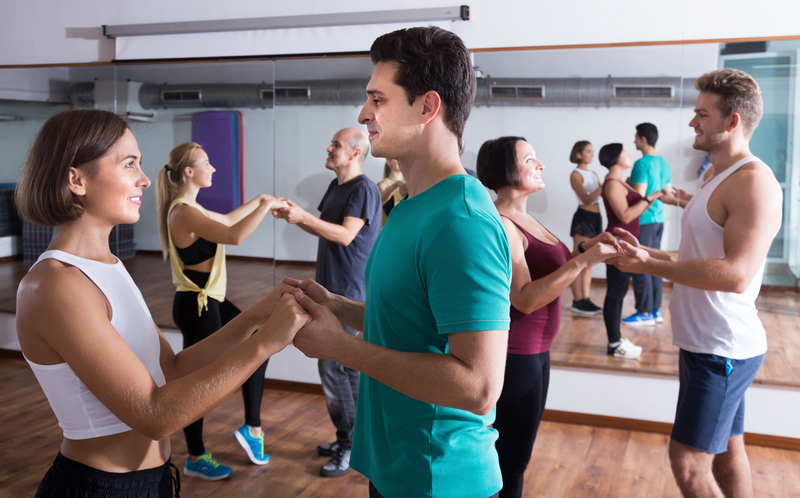Last month was Alzheimer’s and Brain Awareness Month. There are an estimated 47 million people worldwide living with Alzheimer’s disease and other dementias. If you are not familiar with Alzheimer’s disease, it is a progressive disease that affects memory and other cognitive functions, and it is the most common form of dementia.
Since there is no known cure for the illness, people are looking for ways to stay cognitively active, and one such way that has been getting a lot of attention is dance! According to researchers, dancing involves both a mental effort and social interaction, which helps reduce the risk of dementia. We are now realizing that dance has so many benefits outside of physical health. Here are seven ways that dance impacts our brains.
#1. Dance makes us smarter.
Jean Piaget stated that intelligence is what we use when we do not already know what to do. Engaging in dance has the ability to improve processing and executive functioning skills, which correlate to greater intelligence. Through dance, we are able to improve our ability to make decisions and process information. Studies have reported that dance even helps with focus, productivity and mental acuity.
#2. Dance helps create new neural connections.
When we engage in movements that cross the midline (or center) of our body, we actually allow one hemisphere of the brain to “talk” to the other. This essentially creates new neural connections that enhance our neuroplasticity or, in other words, our brain’s ability to change. Crossing our arms, legs, even fingers, allows our brains to light up with new activity. Try writing or throwing a ball with your non-dominant hand — all great ways to challenge your existing neural connections and build new ones.
#3. Dance reduces stress.
When you dance, your brain releases serotonin, a “feel good” hormone. Participating in dance on a regular basis has been shown to reduce anxiety and stress in the brain and the body, as well as play a role in stress management. Moving the body, especially in a creative way, allows tension to release rather than continue to build up. Incorporating breathing, which is a part of warming up and cooling down, taps into the parasympathetic nervous system, which signals our rest and digest reflex.
#4. Dance helps maintain and even improve memory.
In an article from March 2017, Huffington Post published that “dance lessons, in particular — perhaps because they incorporate exercise, social interaction and learning — have a positive effect on a brain region called the fornix. The fornix connects the hippocampus to other areas of the brain and seems to play an important role in memory.” Also consider the implications that dancing has on muscle memory, the body’s ability to retain and recall information. Practicing a dance or choreography enhances procedural memory, which in turn supports the brains ability to quickly instruct or carry out a task.
#5. Dance allows for greater empathy and compassion.
Finding new ways to move and expanding our “movement repertoire” allows us to move from a place of greater acceptance and understanding. We can enhance our tolerance and create space for differences by trying on new movements, essentially getting a feel for what it is like to move in someone else’s shoes. Engaging in dance and movement can even have a positive impact on bullying and violence prevention. In her book Disarming the Playground, dance/movement therapist Rena Kornblum says, “Since violent acts are a series of movements our bodies have learned to use to represent our inability to control emotions like anger, it follows that learning different movements to express or react to anger can prevent violence.”
#6. Dance increases creativity.
If you have ever prepared for an audition, showcase or merely marked some choreography, you most likely used your hands to symbolize a larger movement. Using our hands and engaging in gesturing actually increases our creativity. Hand gestures facilitate acquisition of knowledge and new skills in addition to facilitating the use of our imagination.
#7. Dance fosters social interaction.
Dance lessons can help improve social and communication skills. Dance can help people learn how to work as part of a team, develop a greater ability to cooperate and even assist people in making new friends. Have anxiety around new people and places? Try dancing to help engage in a safe social activity.
Dance and movement, the core component of dance, is an invaluable tool for brain health. In fact, technique and skill are not even required to reap the benefits. All that is required is the desire to stay active and challenge your brain. Outside of the world of professional dance, many people are essentially using dance as preventative or even interventional medicine. I encourage anyone reading this to try a dance class or merely put on some music and allow your body to move to its own rhythm. Start taking care of your brain and invest in its health.
For a more detailed look at how dance/movement therapy can help individuals affected by dementia, feel free to check out WGN’s Living Healthy Chicago.
For more information about Alzheimer’s disease, check out the Alzheimer’s Association, as well as Maria Shriver’s Women’s Alzheimer’s Movement Move for Minds. Together, we can make a difference and decrease the stigma.
 By Erica Hornthal, LCPC, BC-DMT, Dance/Movement Therapist, Chicago Dance Therapy.
By Erica Hornthal, LCPC, BC-DMT, Dance/Movement Therapist, Chicago Dance Therapy.
Erica Hornthal is a licensed professional clinical counselor and board certified dance/movement therapist based in Chicago, IL. She received her MA in Dance/Movement Therapy and Counseling from Columbia College Chicago and her BS in Psychology from the University of Illinois Champaign-Urbana. Erica is the founder and CEO of Chicago Dance Therapy, the premier dance therapy and counseling practice in Chicago, IL. As a body-centered psychotherapist, Erica assists clients of all ages and abilities in harnessing the power of the mind-body connection to create greater awareness and understanding of emotional and mental health. For more, visit www.chicagodancetherapy.com.















